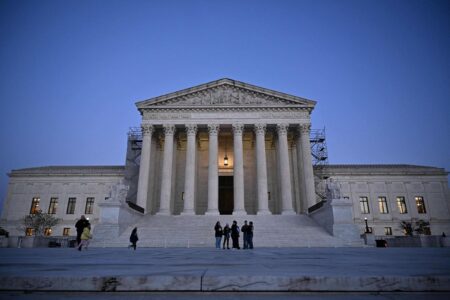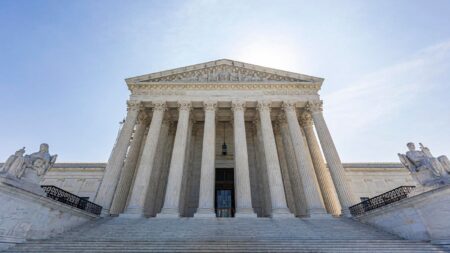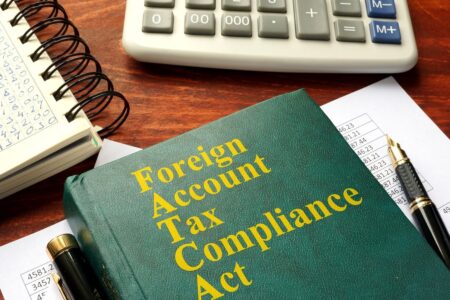IRS Announces Moratorium on the Employee Retention Credit and Provides Guidance for Civil Penalty Amnesty to Withdrawing Improper Claims, Also Known As – Don’t Deposit That Check and Hire Legal Counsel
The expansion and strong marketing tactics of dishonest or naïve “accounting advisors” who encouraged taxpayers to qualify for the Employee Retention Credit (“ERC”) when they did not technically qualify has caused tens of thousands of ineligible and false applications. This will result in hundreds – if not thousands – of criminal investigations and many more civil penalty situations.
Taxpayers who may have filed an ERC claim with these issues should consult independent legal counsel immediately under the attorney/client privilege to determine how to move forward best.
On September 14, 2023, the Internal Revenue Service (“IRS”) issued IR-2023-169, which announced the immediate suspension of new claims through the end of the year. The Announcement came following “growing concerns inside the tax agency, from tax professionals as well as media reports that a substantial number of new claims from the aging program are ineligible and increasingly putting businesses at financial risk by being pressured and scammed by aggressive promoters and marketing.”
One purpose of the moratorium is to allow the IRS to focus on processing existing claims. As of October 12, 2023, the IRS stated that there are still 162,000 unprocessed Form 941s, and 849,000 unprocessed Form 941-Xs claiming the ERC. The Forms are processed in the order of receipt, and many are still waiting to receive the ERC. Hopefully, this allows the IRS to catch up and provide relief to the taxpayers who appropriately qualify.
The IRS also issued FS-2023-24 on October 19th, which outlines a process for taxpayers to withdraw their ERC claims.
Taxpayers who have filed claims should review the qualification requirements with a qualified attorney to determine whether the claim was appropriate. If the claim was not appropriate, they should immediately withdraw the claim through the withdrawal process outlined by the IRS after consulting with legal counsel.
The October 19, 2023, IRS Announcement indicates that many “scammers” are giving or facilitating immediate loans to ERC claimants. Regardless of whether the IRS pays the claim, these loans must be repaid by the claimants. This almost seems like a South Park cartoon, but it is real.
The ERC was established under the CARES Act in 2020. It was a dollar-for-dollar credit against employment taxes available as reimbursement for “qualified wages” paid to employees during periods of economic hardship or when a business is closed in 2020 or 2021. The purpose of the ERC, much like the Paycheck Protection Program (“PPP”), was to incentivize employers to keep employees on the payroll.
The ERC was initially set to expire on January 1, 2021, but following the passage of the Economic Aid Act on December 27, 2020, it was extended to the 1st and 2nd quarters of 2021 under even more taxpayer-friendly rules. On March 11, 2021, the American Rescue Plan Act of 2021 was signed into law, further extending the ERC’s life to the 3rd and 4th quarters of 2021. The American Rescue Plan Act also added special rules that apply to a “severely financially distressed employer” or a “recovery startup business.” But on November 15, 2021, the Infrastructure Investment and Jobs Act (“Infrastructure Act”) was passed to retroactively eliminate the ERC for the 4th Quarter of 2021 for most businesses other than those that qualified as a “recovery startup business.”
An employer must demonstrate that their business was a victim of either one of the following to qualify for the ERC:
1. Full or Partial Suspension of Business Test – Eligible for the Days Applicable. This test requires the employer to show that the operations of the business were fully or partially suspended due to orders from a government authority limiting commerce, travel, or group meetings due to COVID-19; or
2. Reduction in Gross Receipts Test – Eligible for a Calendar Quarter. This test requires the employer to show that for 2020 quarters that Gross Receipts were less than 50% of the Gross Receipts for the same quarter in the previous year (2019). The test for 2021 quarters only requires the employer to show that Gross Receipts were reduced by 20% when compared to the same quarter in 2019.
An employer that qualifies under either of the above-mentioned tests is eligible for a tax credit equal to 50% of the Qualified Wages (which include qualified health plan expenses) paid to each employee up to $10,000 of wages paid per employee to reach a $5,000 limit for 2020 (i.e., after $10,000 of an employee’s wages are allocated to the ERC, no further credit is available for amounts paid to such employee for the ERC in 2020). For 2021, the percentage of Qualified Wages eligible for the credit was increased to 70%, and the limit of $10,000 of Qualified Wages applies on a per quarter basis, rather than as a limit for the entire year. As a result, if an employer qualified for the ERC in all quarters and paid sufficient wages, the employer could receive up to a $26,000 tax credit per employee.
Eligible employers who have not claimed the credit still have time to claim it. They have until April 15, 2024 to claim the credit for 2020 tax periods, and until April 15, 2025 for 2021 tax periods.
This credit justifiably helped many businesses survive the COVID pandemic but was unfortunately also the target of significant abuse via ineligible and even fraudulent claims.
While the Reduction in Gross Receipts test is a straightforward mathematical determination, the Full or Partial Suspension of the Business Test is not as straightforward and thus has been subject to abuse. The IRS repeatedly issued warnings to taxpayers to address concerns of aggressive promoters encouraging gullible business owners to claim the ERC, even placing it on its Dirty Dozen Tax Scams list.
In a May 25, 2023 release, IRS Commissioner Danny Werfel said, “Aggressive promoters present wildly misleading claims about this credit. They can pocket handsome fees while leaving those claiming the credit at risk of having the claims denied or facing scenarios where they need to repay the credit.” The release also outlined several warning signs of “aggressive ERC marketing” that business owners should watch out for, which included the following:
1. Unsolicited calls or advertisements mentioning an “easy application process.”
2. Statements that the promoter or company can determine ERC eligibility within minutes.
3. Large upfront fees to claim the credit.
4. Fees based on a percentage of the refund amount of Employee Retention Credit claimed. This is a similar warning sign for average taxpayers, who should always avoid a tax preparer basing their fee on the size of the refund.
5. Aggressive claims from the promoter that the business receiving the solicitation qualifies before any discussion of the group’s tax situation. In reality, the Employee Retention Credit is a complex credit that requires careful review before applying.
6. The IRS also sees wildly aggressive suggestions from marketers urging businesses to submit the claim because there is nothing to lose. In reality, those improperly receiving the credit could have to repay it – also possible substantial interest and penalties.
These promoters may lie about eligibility requirements. In addition, those using these companies could be at risk of someone using the credit as a ploy to steal the taxpayer’s identity or take a cut of the taxpayer’s improperly claimed credit.
Despite these warnings, the IRS continued to receive a “flood of improper Employee Retention Credit claims,” prompting it to issue the September 14th order to immediately stop processing new claims until at least the end of 2023. As mentioned above, one purpose of the moratorium is to allow the IRS to focus on processing existing claims. As of October 12, 2023, the IRS stated that there are still 162,000 unprocessed Form 941s, and 849,000 unprocessed Form 941-Xs claiming the ERC. The Forms are processed in the order of receipt, and many are still waiting to receive the ERC. Hopefully, this allows the IRS to catch up and provide relief to the taxpayers who appropriately qualify.
The IRS is continuing to process previously filed claims since the moratorium only applies to new claims; however, the unprocessed claims will be subject to stricter compliance reviews, resulting in the standard processing goal being increased from 90 days to 180 days. However, this does not mean that the ERC program has ended. Those taxpayers who are otherwise eligible may still file a claim for the ERC but should first consult with a qualified attorney to ensure they meet the eligibility criteria.
The notice also hinted at “new initiatives” to help business owners who fell victim to these aggressive promoters, including a settlement program to repay the credit for those who were ineligible to avoid penalties and future compliance action.
The first part of this “new initiative” was released on October 19, 2023. It provided a method for businesses that filed for the ERC to withdraw their claim if they have not yet received or deposited the refund check.
The withdrawal process generally involves filing an amended Form 941 to reflect the elimination of the ERC. The procedure to follow depends on the claim’s status, and each eligible scenario is outlined below.
According to the IRS Announcement, in order to be eligible to use the new withdrawal process, all of the following must apply:
1. The taxpayer made the claim on an adjusted employment tax return (Forms 941-X, 943-X, 944-X, CT-1X).
2. The taxpayer filed the adjusted return only to claim the ERC, and made no other adjustments.
3. The taxpayer wants to withdraw the entire amount of the ERC claim.
4. The IRS has not paid the claim, or the IRS has paid the claim, but the taxpayer has not cashed or deposited the refund check.
If the above criteria are met, the taxpayer may use the withdrawal process. The IRS broke the procedures into three different situations and outlined the procedures for each situation. The three situations are:
1. The taxpayer has not received a refund and has not been notified that the claim is under audit.
2. The taxpayer has not received a refund and has not been notified that the claim is under audit.
3. The taxpayer received a refund check but has not cashed or deposited it.
For taxpayers who have not been notified that the claim is under audit and have not received a refund, the following steps must be taken to withdraw the claim for the ERC:
1. Make a copy of the adjusted return (generally the Form 941-x filed to claim the credit) with the claim you wish to withdraw, and write “Withdrawn” in the left margin of the first page.
2. In the right margin of the first page, have an authorized person sign and date it the return with their name and titled printed next to their signature.
3. Fax a signed copy of the return to the IRS’s ERC claim withdrawal fax line at 855-738-7609, and keep a copy with your tax records.
A sample withdrawal request is available at:
The Announcement noted that the withdrawal request can be mailed to the address in the instructions for the adjusted return (generally Form 941-X) if the business owner is unable to fax it. It will be important to retain a copy of the signed and dated first page of the withdrawal request for record-keeping purposes and to track the package to confirm delivery to the IRS. The Announcement noted that the preferred method is to fax the withdrawal request and that it will take longer for the IRS to receive and process the withdrawal request if it is mailed.
For those taxpayers who have been notified that the claim is under audit and have not received a refund, the following steps must be taken to withdraw the claim for the ERC:
1. Prepare the withdrawal request using the steps outlined above, but instead of faxing the request to the fax line, communicate with the IRS agent assigned to examine the claim about how to submit the withdrawal request directly to them. (Good luck getting a call back, if the IRS is massively understaffed in this department due to budgeting constraints beyond the IRS’s control.)
2. For those that have not yet been assigned an examiner, respond to the audit notice with the withdrawal request pursuant to the steps outline above, using the instructions in the notice for responding.
For those taxpayers who have received a refund check but have not cashed the check or deposited the check, the following steps must be taken to withdraw the claim for the ERC:
1. Prepare the claim withdrawal request using the steps outlined above, but do not fax the request.
2. Write “Void” in the endorsement section on the back of the refund check.
3. Include a note that says, “ERC Withdrawal” and briefly explain the reason for returning the refund check.
4. Make copies for your tax records of the front and back of the voided check, the explanation notes and the signed and dated withdrawal request page.
5. Do not staple, bend or paper clip the voided check; include it with the claim withdrawal request and mail it to the IRS at:
Cincinnati Refund Inquiry Unit
PO Box 145500
Mail Stop 536G
Cincinnati, OH 45250
Track your package to confirm delivery.
If the business filed adjusted returns for more than one tax period, the business must follow the steps above for each tax period the business seeks to withdraw.
Once the withdrawal request is submitted, the IRS will follow up with a letter stating whether the request was accepted. If a check is received in the meantime, the check should be returned using the procedures outlined above.
The Announcement of a formal process to withdraw a claim for the ERC is great news to many tax professionals who have reviewed client situations where the client was clearly taken advantage of by aggressive promoters. The above procedures provide a clear path to withdraw the claim and hopefully avoid further issues with respect to such claim.
Business owners who filed for a credit that has not yet been received and have not sought the advice of a qualified attorney should immediately have their claim reviewed by a qualified attorney who is familiar with the ERC eligibility requirements. This is of particular importance for those who may have relied on a promoter or other third party to file their claim to consider whether to withdraw their claim. We echo the advice of the Commissioner copied from the May 25th warning stating:
Eligible employers who need help claiming the credit should work with a trusted tax professional; the IRS urges people not to rely on the advice of those soliciting these credits. Promoters who are marketing this ultimately have a vested interest in making money; in many cases they are not looking out for the best interests of those applying. Don’t apply unless you believe you are legitimately qualified for this credit. Details about the credit are available on IRS.gov, and again a trusted tax professional – not someone promoting the credit – can provide critical professional advice on the ERC.
Taxpayers who receive a refund via the ERC are ineligible. They must repay the credit received along with any possible penalties and interest and additionally may be subject to criminal charges. It is noteworthy that the Announcement outlining the withdrawal process and FAQs related to the withdrawal process specifically state that if a withdrawal request is accepted, the claim will be treated as if it was never filed, and the IRS will not impose any penalties or interest. That being said, the IRS also stated withdrawing a fraudulent claim will not exempt the taxpayer from potential criminal investigation and prosecution if the taxpayer willfully filed a fraudulent ERC claim or assisted or conspired in such conduct.
To determine whether the claim was properly filed, business owners who filed for the ERC with a promoter or other third party should request a detailed summary of the following to be reviewed by a qualified attorney:
1. The justification for eligibility including whether the company filed under the Reduction of Gross Receipts Test or the Full or Partial Suspension of the Business Test.
2. If the eligibility is based on the Full or Partial Suspension of the Business Test, what specific government order was relied upon to justify eligibility. Note that general statements and reasoning for why the business was closed or suspended are not sufficient for qualification.
3. Details as to how the credit was calculated including the supporting data submitted with the claim.
Taxpayers who received the credit are also required to adjust their wage deduction by the amount of the credit received and to file amended returns, decreasing the associated wage deduction. Many promoters fail to mention this to taxpayers, who will now be required to file amended returns and pay taxes due to the loss of the wage deduction to the extent that the credit was received.
The withdrawal process provides a welcome avenue of relief for those who unknowingly fell victim to aggressive promoters or otherwise filed a claim believing that they were eligible. In such situations, the withdrawal request should be submitted sooner rather than later with the assistance of a qualified attorney. We thank the IRS for providing clear instructions on the withdrawal process. We await further guidance for those who have already received the credit and now realize they were ineligible to return the funds via the coming settlement program.
Join me and my partner, Brandon Ketron for free 30 minute webinar on “Your Guide of the New ERC Crisis” on Tuesday, October 31, 2023 from 11:00 AM to 11:30 PM EST by emailing Info@Gassmanpa.com.
Read the full article here









